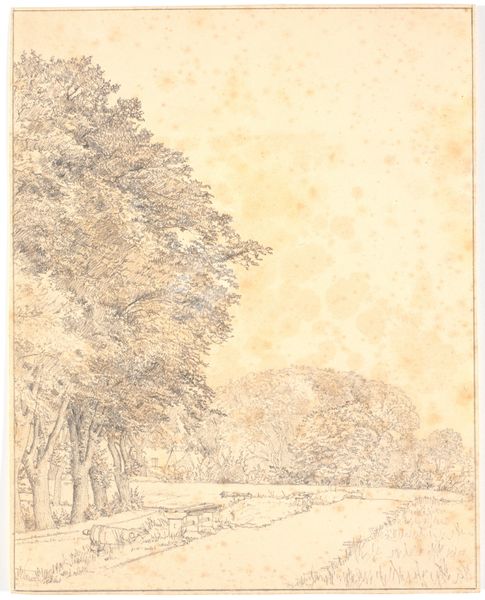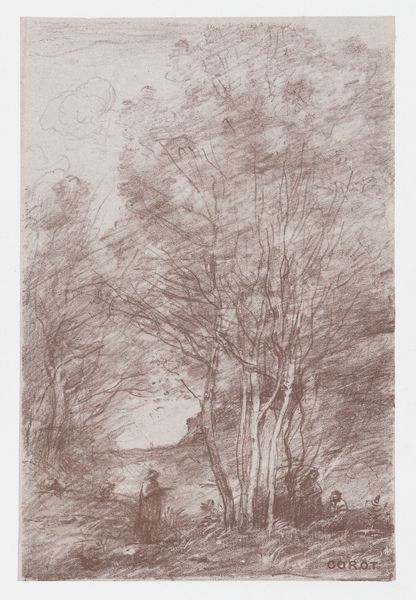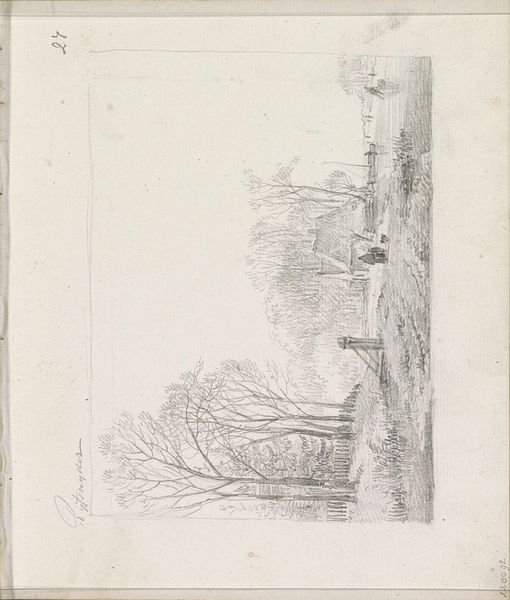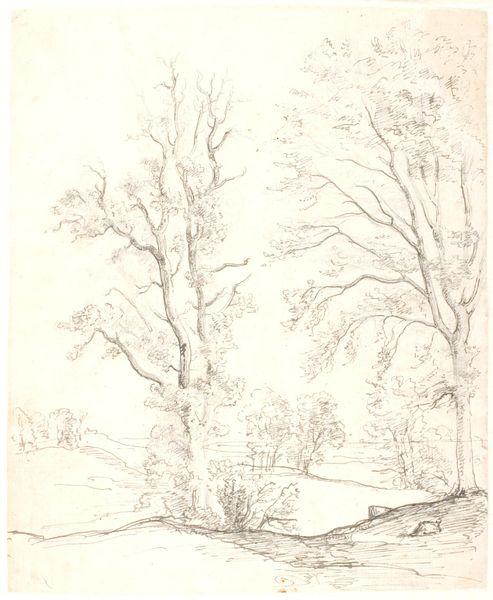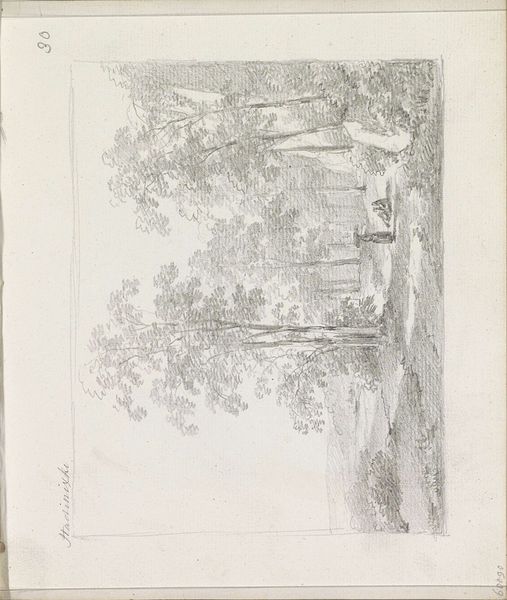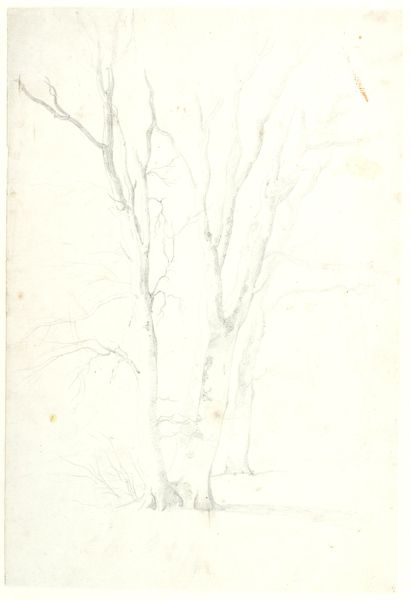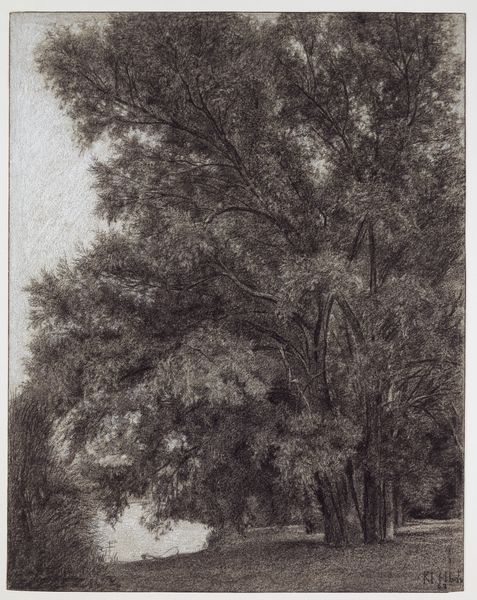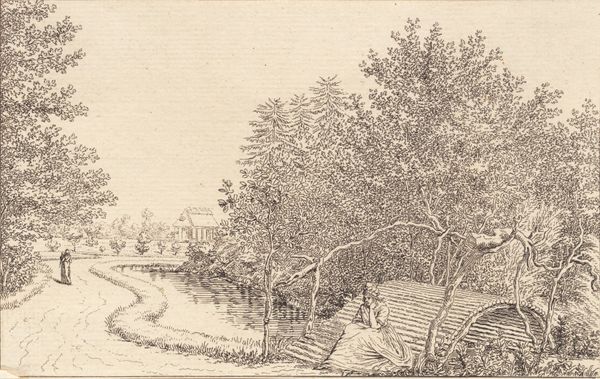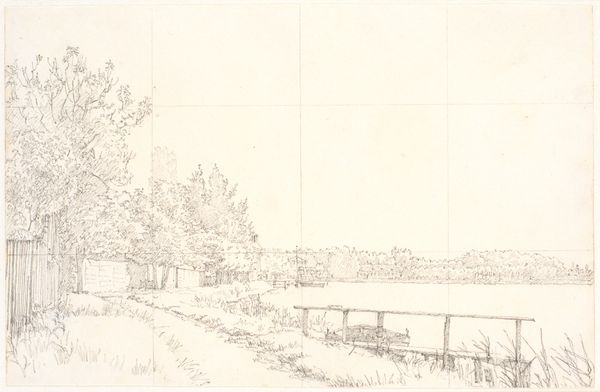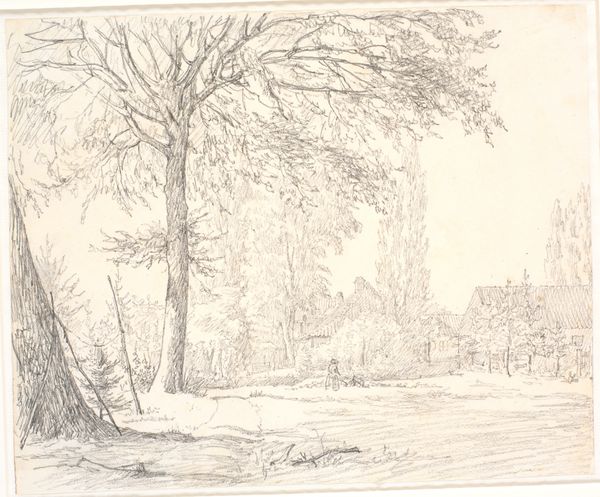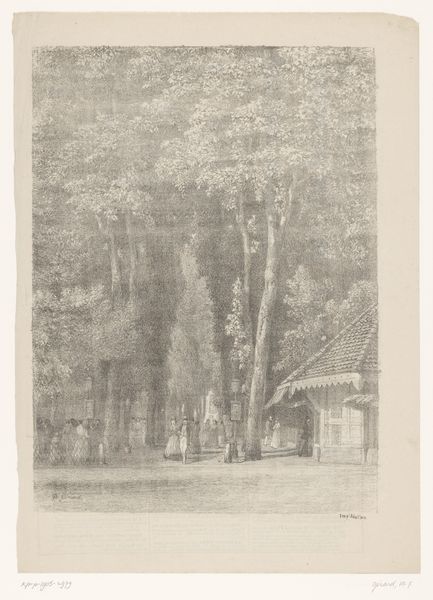
drawing, pencil
#
drawing
#
pencil sketch
#
landscape
#
romanticism
#
pencil
#
realism
Dimensions: 240 mm (height) x 170 mm (width) (bladmaal)
Curator: Dankvart Dreyer's 1833 pencil sketch, “En vej mellem haver og huse”—or, "A Road Between Gardens and Houses"—has a dreamlike quality to me. The hazy light and gentle shading give it an ethereal, almost melancholic, feel. Editor: I see what you mean. It's subtle, almost austere, right? I'm drawn to the mark-making. It’s pencil on paper, sure, but how much does the tooth of that paper dictate the texture? What kind of pencil was he using, even? It looks like the cheap kind. Curator: It’s so fascinating to imagine Dreyer walking this very road, observing, feeling. He was a product of Danish Romanticism, so this deeply personal connection to the land, the feeling of it, was everything. Editor: Yes, but who *built* the road? How did it get paved and who profited from its construction? You say gardens, I think fences and the labor needed to grow, tend to them and haul the harvest, to get that growth *represented* by Drever's pencil marks. Curator: That's an interesting point. He certainly doesn't emphasize the labor or social hierarchies here. Instead, we get this feeling of quietude. A figure in the distance, almost swallowed by the landscape…it’s intensely lonely! Editor: I wouldn't use the word lonely, maybe introspective instead. I also see how the application of material gives volume in some areas but flattens the image plane overall; how some passages render in perfect detail but the buildings lack dimensional integrity in order to compress the space so that they resemble abstract blocks or monuments of some kind instead of garden fences! Curator: I think that contrast you notice lends a sort of humble grandeur to this otherwise modest, almost quotidian scene. Like he's elevating the everyday. Editor: Exactly! It all comes back to materials; I think the limitation of pencil sketching also creates these paradoxes in representation because some choices and details have to get simplified in order to capture certain effects under set material restraints—time included! Curator: It's amazing how a simple drawing can provoke so much thought. To think about Denmark, landscape, economy, pencil production of the 1830s from such sparse use of the medium... I like it. Editor: Right! Dreyer turns cheap stuff into gold. That alone has me convinced of this drawing's cultural worth.
Comments
No comments
Be the first to comment and join the conversation on the ultimate creative platform.
